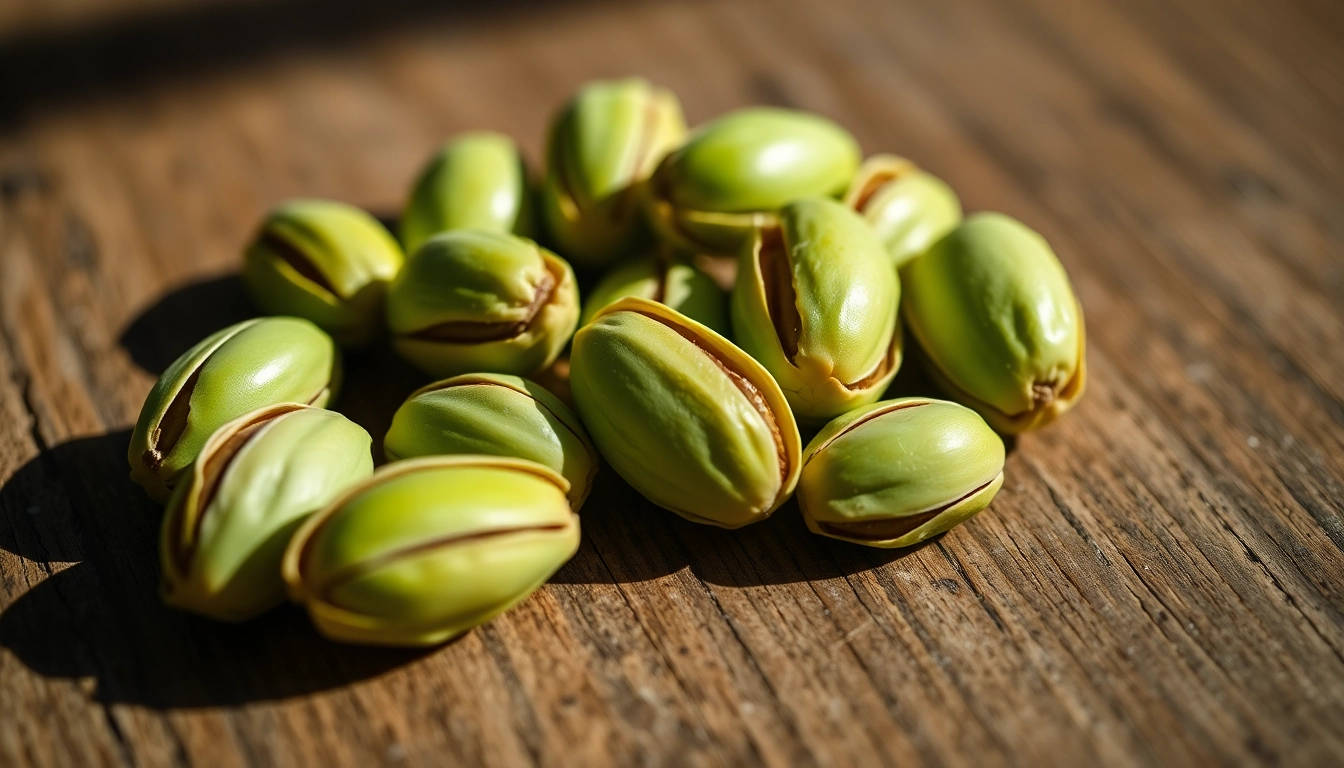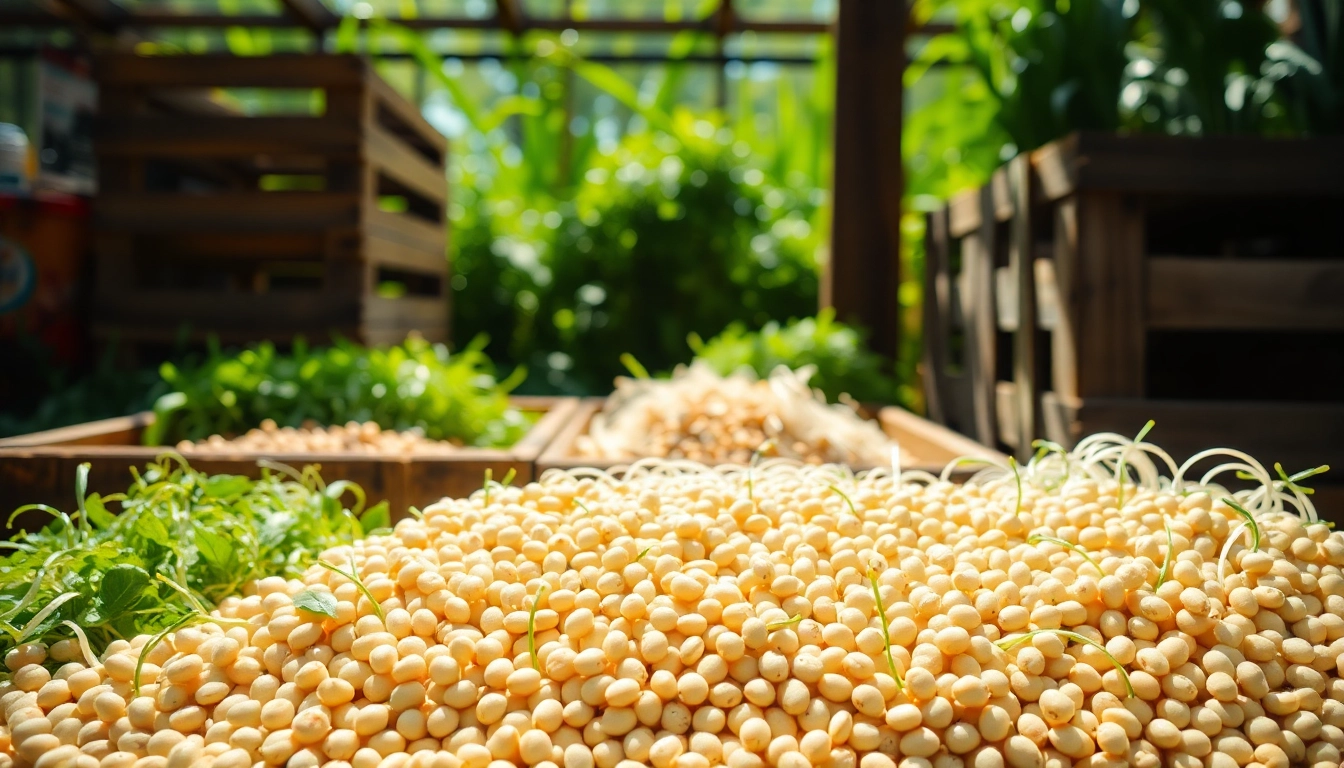Understanding Pistachio Nuts
The Botanicals Behind Pistachio Nuts
Pistachio nuts are a delightful culinary treat that have been enjoyed for thousands of years. They come from the pistachio tree, known scientifically as Pistacia vera, which is part of the cashew family, Anacardiaceae. These trees thrive in dry and warm climates, primarily found in regions of Iran, Turkey, and the Mediterranean. An interesting aspect of pistachios is that what we refer to as a nut is botanically classified as a drupe – a fruit with a hard outer shell covering a seed.
The pistachio tree is notable for its ability to adapt to harsh conditions; it’s often cultivated in semi-arid climates. Mature trees can grow up to 30 feet in height and produce seeds (the nuts) that are prized for their rich flavor and crunchy texture. The cultivation and harvesting of pistachio nuts involve intricate processes including proper tree management and timing the harvest just right to ensure optimal flavor and quality.
Pistachio Nuts Varieties and Their Characteristics
Different varieties of pistachio nuts bring unique flavors and textures to the table. The most commonly cultivated variety is the ‘Kerman,’ which is widely recognized for its large size and green hue. Another popular variety is the ‘Pistachio de Bronte,’ hailing from Italy. This variety is smaller, more flavorful, and has a distinctive jewel-green color due to its higher chlorophyll content.
Aside from these, other varieties like ‘Ahmadaghaee’ and ‘Badami’ offer subtle differences in taste and crunchiness. The regional variations not only enhance culinary uses but also reflect the cultural significance of pistachios in different countries. For example, in Persia, pistachios are often served as a traditional snack during festive occasions.
Culinary Uses of Pistachio Nuts
The versatility of pistachio nuts in culinary applications is astounding. They can be enjoyed raw, roasted, or salted, and are common in both sweet and savory dishes. When added to desserts such as ice creams or pastries, pistachios not only provide a vibrant color but also a rich flavor that enhances the overall enjoyment of the dish. They can be ground into flour, adding a unique nutty taste to baked goods.
In savory recipes, pistachios can be incorporated into salads, pesto, or as a topping for meat and fish dishes. Their creamy consistency allows them to be blended well into sauces, offering rich umami notes. Moreover, being a popular snack, roasted pistachios can be enjoyed on their own or mixed with other nuts and dried fruits for a nutritious trail mix.
Nutritional Profile of Pistachio Nuts
Calories and Macronutrients in Pistachio Nuts
In terms of nutrition, pistachio nuts are an excellent source of healthy fats, protein, and fiber. A one-ounce serving (about 49 nuts) contains approximately 160 calories, making them one of the most nutritious options in the nut family. This abundance of nutrients supports satiety, making pistachios an ideal snack for those seeking to maintain or lose weight.
Furthermore, each serving provides around 13 grams of fat, but the majority is unsaturated fat, which is heart-healthy. Pistachio nuts also supply roughly 6 grams of protein, which is higher than many other nuts, contributing to muscle development and repair while providing energy. Their fiber content, about 3 grams per ounce, aids in digestion, helping maintain gut health.
Vitamins and Minerals Found in Pistachio Nuts
Pistachio nuts are also packed with essential vitamins and minerals. Key micronutrients include vitamin B6, which aids in protein metabolism and the formation of hemoglobin, and vitamin E, a powerful antioxidant that protects cells from damage. Additionally, pistachios contain potassium, magnesium, and phosphorus, all essential for various physiological functions including nerve function, muscle contraction, and bone health.
The presence of antioxidants such as lutein and zeaxanthin in pistachios contributes to ocular health. These compounds are particularly beneficial in reducing the risk of age-related macular degeneration, making pistachios a smart choice for those looking to maintain eye health.
Comparison with Other Nuts: Pistachio Nuts vs. Almonds
When comparing pistachios to other popular nuts like almonds, several nutritional differences arise. While almonds are higher in vitamin E and calcium, pistachios contain more vitamin B6 and potassium. A side-by-side comparison shows that both nuts provide healthy fats but differ in quantity; almonds have a slightly higher fat content overall, making pistachios a lower-calorie alternative when snacking.
Moreover, the fiber content is comparable, although pistachios deliver more nuts per serving, enhancing their satiety effects without significantly increasing calorie intake. This characteristic contributes to the uniqueness of pistachios, marking them as a preferable option for those seeking a nutrient-dense snack without excess calories.
Health Benefits of Pistachio Nuts
Antioxidants and Their Role in Health with Pistachio Nuts
Pistachios are notably rich in antioxidants, which play a crucial role in neutralizing free radicals in the body, potentially reducing inflammation and the risk of chronic diseases. Research indicates that consuming pistachios may offer protective benefits against heart disease, type 2 diabetes, and certain types of cancer. Their unique blend of antioxidants helps support overall health, enhancing the body’s resilience against a variety of ailments.
Studies have shown a significant reduction in markers of oxidized LDL cholesterol after regular pistachio intake, providing another avenue to support cardiovascular health. This powerful effect is attributed to the high content of phytosterols and tocopherols, which further demonstrate the nuts’ heart-protective qualities.
Pistachio Nuts and Heart Health: What Studies Reveal
Various studies have underscored the direct link between pistachio consumption and improved heart health. A study published in the Journal of Nutrition indicated that a diet that includes pistachios leads to lower blood pressure and cholesterol levels. The nuts’ high content of unsaturated fats and fiber aids in promoting healthy cholesterol levels, thus reducing the risk of cardiovascular diseases.
Moreover, pistachios contain arginine, a precursor to nitric oxide that facilitates blood vessel dilation. This aspect further supports heart health by improving blood flow and reducing strain on the heart.
Potential Weight Management Advantages of Pistachio Nuts
The link between pistachios and weight management is primarily due to their ability to promote feelings of fullness. Research shows that incorporating pistachios into a diet may help reduce body weight, particularly when compared to other nuts. Their unique structure requires more chewing, which may contribute to a greater sense of satiety.
Moreover, the thermogenic effect associated with nuts, including pistachios, means that the body expends energy while digesting and metabolizing them. Such properties make pistachios not only a satisfying snack but also a smart choice for those seeking to maintain or lose weight without feeling deprived.
Incorporating Pistachio Nuts into Your Diet
Delicious Recipes Featuring Pistachio Nuts
Integrating pistachio nuts into daily meals can be simple and enjoyable. For instance, adding crushed pistachios as a topping for salads enhances both taste and texture, while offering a nutritional boost. A popular dessert recipe includes pistachio baklava, combining layers of phyllo dough with pistachio filling and honey syrup.
Another creative use of pistachios is in homemade pasta. Ground pistachios can be mixed into dough or used as a unique sauce base, offering depth and flavor. Additionally, consider making a pistachio pesto by blending the nuts with basil, olive oil, garlic, and Parmesan, which can elevate sandwiches, grilled meats, and roasted vegetables.
Snack Ideas with Pistachio Nuts for Any Time of Day
Pistachio nuts make an ideal snack at any time of day, whether as a midday pick-me-up or an evening treat. Pair them with dried fruits for an energizing trail mix or mix with yogurt and honey for a nutritious breakfast. Pistachios can also be lightly roasted and seasoned with spices for a gourmet snack option that rivals store-bought varieties.
For those who enjoy savory snacks, consider blending pistachios into hummus or using them to enhance gluten-free baked goods. Their mild sweetness and crumbly texture bring just the right amount of indulgence while maintaining health benefits.
Tips for Buying and Storing Pistachio Nuts
Typically, when purchasing pistachio nuts, aim for those that are sold in bulk to ensure freshness. Look for shells that are open, which indicates that the nut is ripe and ready to eat. For optimal flavor and freshness, store pistachio nuts in an airtight container in a cool, dry place or refrigerate them to prolong their shelf life.
When buying pre-packaged pistachios, check the expiration date and choose unsalted or lightly salted varieties to harness their nutritional benefits without excess sodium.
Addressing Common Myths About Pistachio Nuts
Dietary Concerns: Are Pistachio Nuts High in Fat?
One common myth surrounding pistachio nuts is that they are high in fat and, therefore, should be avoided for those concerned about weight. However, the fat found in pistachios is predominantly unsaturated, which can benefit cardiovascular health. Moderation is crucial, as a handful of these delicious nuts can be a satisfying snack that contributes to a balanced diet.
Moreover, consuming foods high in healthy fats, such as pistachios, can actually support fat loss by enhancing feelings of fullness and decreasing overall caloric intake. It’s essential to focus on the quality of fats in your diet rather than purely the quantity.
Pistachio Nuts and Allergies: What to Know
Pistachios belong to the tree nut family, which includes almonds and walnuts, and may trigger allergic reactions in sensitive individuals. It’s vital for those with tree nut allergies to avoid pistachios as well as all products containing nuts. Symptoms of a pistachio allergy can range from mild to severe, including hives, difficulty breathing, and anaphylaxis.
If you or someone new to pistachios is considering them for inclusion in their diet, it is prudent to consult with a healthcare provider, particularly if there are known allergies to other tree nuts.
Debunking Misconceptions About Pistachio Nuts and Weight Gain
An often-discussed fear regarding nuts like pistachios is their potential for weight gain due to their calorie-dense nature. Research consistently shows that nuts, including pistachios, can be compatible with weight management when consumed in moderation. Their high fiber and protein content contribute to satiety, making them more likely to curb cravings rather than contribute to excess caloric intake.
Studies have demonstrated that participants who incorporated nuts into their diet did not experience significant weight gain and often reported reduced overall hunger. The key is moderation and mindful consumption — a handful of pistachios can provide the perfect balance of nutrition and indulgence without undermining weight management goals.



